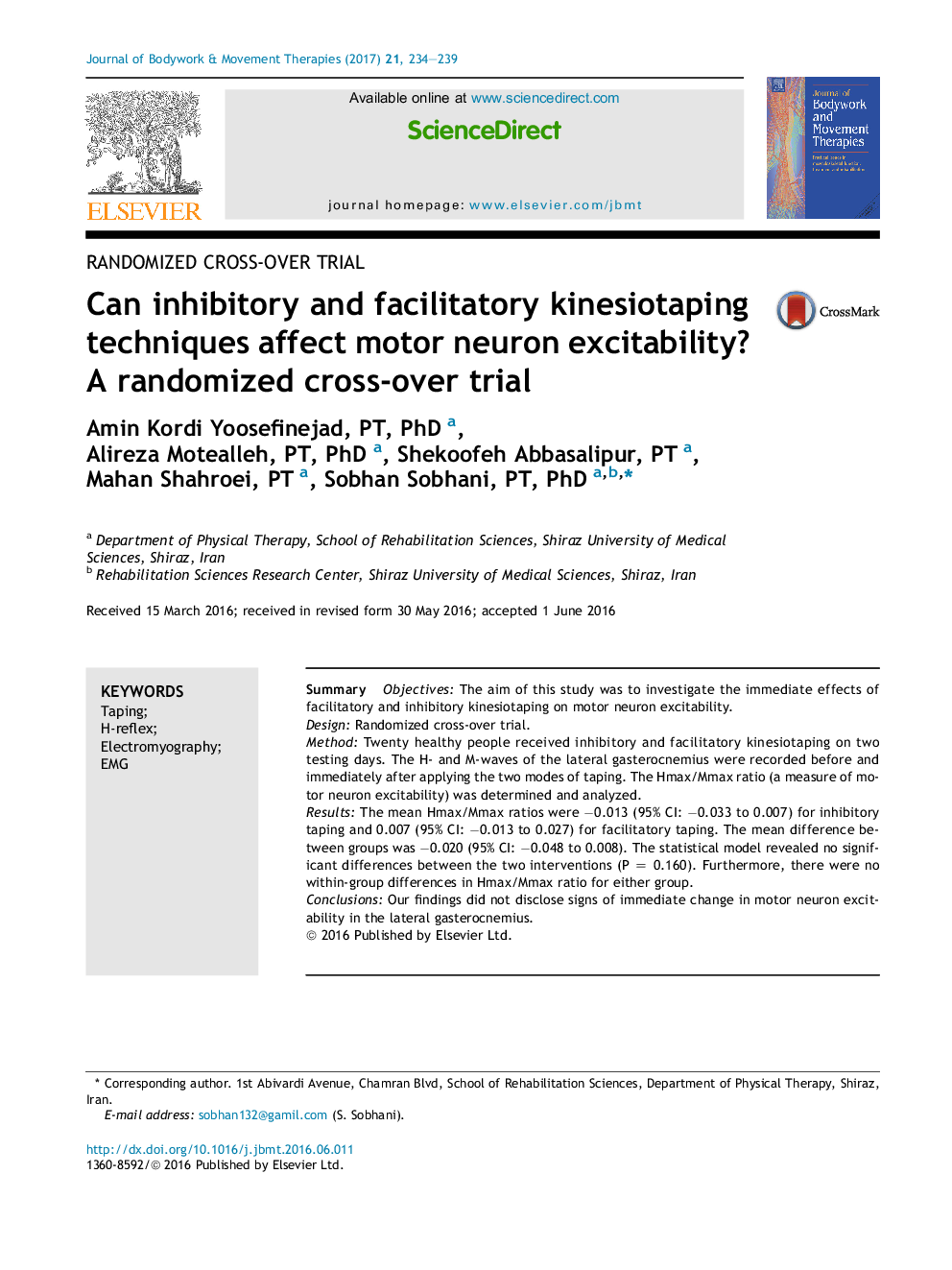| Article ID | Journal | Published Year | Pages | File Type |
|---|---|---|---|---|
| 5564052 | Journal of Bodywork and Movement Therapies | 2017 | 6 Pages |
SummaryObjectivesThe aim of this study was to investigate the immediate effects of facilitatory and inhibitory kinesiotaping on motor neuron excitability.DesignRandomized cross-over trial.MethodTwenty healthy people received inhibitory and facilitatory kinesiotaping on two testing days. The H- and M-waves of the lateral gasterocnemius were recorded before and immediately after applying the two modes of taping. The Hmax/Mmax ratio (a measure of motor neuron excitability) was determined and analyzed.ResultsThe mean Hmax/Mmax ratios were â0.013 (95% CI: â0.033 to 0.007) for inhibitory taping and 0.007 (95% CI: â0.013 to 0.027) for facilitatory taping. The mean difference between groups was â0.020 (95% CI: â0.048 to 0.008). The statistical model revealed no significant differences between the two interventions (PÂ =Â 0.160). Furthermore, there were no within-group differences in Hmax/Mmax ratio for either group.ConclusionsOur findings did not disclose signs of immediate change in motor neuron excitability in the lateral gasterocnemius.
